-
Posts
1,673 -
Joined
-
Last visited
-
Days Won
38
Content Type
Profiles
Forums
Events
Posts posted by Syzygies
-
-
Take into account how liquids take on smoke more quickly. If you like the effect but it's faint, you're on the right track. If the results are wretched, it could be either that you don't like smoked milk, or you used too much smoke.
I prefer to have the chicken itself carry the smoke into the stew.
In the late eighties I visited New Orleans on a soon-to-expire airline bump voucher, and ate over a dozen gumbos. Then I was visiting Nice, France with a friend, and had this idea of getting invited over to people's houses to cook dinner parties. Cooking French for the French didn't make sense, but I was impressed how Alice Waters had transported the idea of Provence to California, founding Chez Pannise. I thought, turn-around is fair play, I'll bring New Orleans to Nice and make a Mediterranean gumbo.
My friend rolled his eyes at the implausibility of this fantasy, but humored me. A Chez Panisse connection? That's over-thinking things, like the LA Dodgers.
A complication for my second host (a dear, now departed friend who made me feel French) was that they kept strict kosher. I wasn't allowed to make the stock. I spent what would be over $100 now on amazing vegetables at the farmers market. Soon we realized we were making an overhyped chicken soup, with twelve guests about to arrive. Jacques came up with the idea of smoking the chicken over vine cuttings. Back in the gumbo, the smoke came up like a house fire, then ... then ... stopped at just the right point.
To my surprise, one of the coauthors of Chez Panisse Pasta, Pizza, & Calzone arrived, expresses her pleasure at an American who cooks. Then everyone is stunned, Jacques kindly (a clear lie) pronounces our gumbo the best meal served in his home. My friend and I get a return invitation a few nights later, learning to make pizza in the home and garden illustrated in the pizza book.
-
 2
2
-
-

Yes, you don't need a ceramic cooker heat deflector, any more than you need a trombone mute.
Nevertheless, people like to "shape" the fire in a cooker, just as they like to "shape" the sound from a trombone. In both cases there are long traditions of using found objects, such as terra cotta plant saucers and toilet plungers, respectively.
Some people inexplicably have trouble reaching higher temperatures in a ceramic cooker. A heat deflector makes this harder, but with good technique one won't notice a difference.
Be sure to leave an inch or more on all sides, and buy an unglazed plant saucer to minimize the risk of lead. (As an aside, galvanized metals off-gas toxins. Like choosing smoking woods, only use materials in a BBQ that have a long-standing tradition of tested historical use. Even here, one might question the choice of used oil drums by Texas oil workers for their BBQ rigs. Err on the side of caution, and be aware of what one does not know.)
Terra cotta plant saucers are easily lined with foil, for easy mess disposal after a cook. They eventually crack. I went through a saucer every several years for a long time, before moving on.
-
 1
1
-
-
Nice! We get their flyers but I didn't spot this; we use KA flour whenever we aren't grinding our own. I look forward to someone making a comparison.
I have two data points: We've made nixtamal from Anson Mills Henry Moore Yellow Hominy Corn, and we've bought prepared artisanal masa from Primavera at the Sunday Ferry Plaza Farmers Market in San Francisco. Both are based on domestic US corn, and both masas were excellent; Primavera is my favorite Mexican restaurant in the Bay Area. However, we preferred masa made from corn grown in Oaxaca, Mexico, as sold by Masienda.
Masienda sells masa harina (masa flour) in red, white, and blue. We use the white to dry out too-wet masa mixtures from our Indian wet grinder.
I'd like to compare the Masienda white against the KA masa harina.
-
1 hour ago, MacKenzie said:
I think I need my head examined. I cooked this on the KK and I was so shaken up by the experience that the pix is even blurry.
Haddock on the KK.
Shaken? Or stirred?
-
 3
3
-
-
11 hours ago, johnnymnemonic said:
here's a hilarious video - can't believe they let this crap stay up there if this is still a serious product.
What I find most astonishing: They're priced comparable to a KK. At least Richard's K's were priced as starter marriages.
-
Typical Sunday at the ranch. I processed two 20 lb boxes of Santa Cruz dry farmed Early Girl tomatoes into Sicilian estrattu (paste) overnight, still working in the dehydrator I built. Shown is what's left of one box after 24 hours, more than it looks on a full sheet pan. This morning I picked up 15 lbs each of chicken bones and vegetables for stock, filling a 22 quart commercial pot to the brim. Oh, dinner, right. A pheasant in the KK.
-
 9
9
-
-
6 hours ago, Newbie1925 said:
Hello all,
Hi! You do realize your handle will be an inside joke, when you make your 1000th post as an expert in 10 years?
You don't need a controller. I'm always amazed how I can hit a target temperature first time I check, after lots of experience. It can wait, and you'll never learn if you don't try not using one. But you want a controller. If you do something that found the money for a 42, your idea of recreation is probably also doing seven things at once. (Today I have estrattu working from 40 lbs of Santa Cruz dry farmed Early Girl tomatoes (in a dehydrator I build myself), and a 22 quart stock pot filled to the brim with chicken stock, and I should really be lighting a fire for pheasant rather than answering you.)
When you're doing seven things at once, a controller is welcome.
-
 1
1
-
 1
1
-
-
Looks to me like a Richard K5, not a KK. Very different construction, perhaps $600 new. Has all it's tiles, so looks never used.
I've made decent Q for a crowd on this, a friend bought a K5 when I bought a K7. My K7 fell apart, even my neighbor sent it to the dump as his tastes evolved. But let's remember, Texas Q started with metal worker off hours converting oil drums to offset cookers, with the right skills one can make great Q in a ditch.
A KK is a Lear jet. This is not that.
-
 3
3
-
 1
1
-
-
13 minutes ago, jonj said:
I do woodworking as a hobby and have found developing a work plan / checklist well in advance can help with a successful outcome. Kind of the extension of the "measure twice, cut once" philosophy.
Me too. I need to use my hands. For woodworking I'll draw plans in Adobe Illustrator, often computed from a spreadsheet. Then I'll scribble on several printouts while measuring again. Then my neighbor is a master woodworker with a shop and table saw I don't have the space for. He gets the best plywood in the SF Bay Area delivered, and cuts for me.
I've been making wine racks from various sizes of metal lattice. Pictured is the installed rack (walnut) for 100 bottles, and plans to cut two 25 bottle "overflow campgrounds" that are alas still in use.
-
 1
1
-
-
20 hours ago, tony b said:
I would think that it would get hot enough under the basket to ignite the wood inside, but my best guess is that it might take longer to heat up to ignition temperature, seeing as it's not in direct contact with the burning embers in the basket.
My hunch, based on decades of experiments, is that for low & slow this wouldn't get hot enough to produce reasonable smoke.
However, the classic cast iron smoke pot has an effective range of 200 F to 275 F, depending on taste. At around 275 F, the smoke is too intense for some. One could try a smaller pot, though "underneath" becomes an interesting strategy. There will be a different effective range, making this interesting.
Of course, the way to be free of "effective range" considerations is to buy the official KK Hot/Cold Smoke Generator. Newer KKs come with a port for this. I have the smoke generator, but it will require drilling my 2009 23" KK. I haven't found the time yet, or all the instructional material all in one place for how to do this. I'm very fussy, as in I still can't understand why university contractors didn't use backing boards when they drilled my kitchen cabinets for knobs. I want to figure out the "backing board" approach to this retrofit, how one would proceed if the KK cost $60,000. When I do, I'll fully document my procedure, as learned from whatever is scattered about here.
-
 1
1
-
-
21 hours ago, tekobo said:
I think I showed the fact that I needed a shorter one in the video but I can't quite remember.
Yes, starting at 13:48 and ending at 14:13 with "and Bob's your uncle."
-
 1
1
-
-
So I had high hopes for the MSR Alpine Stowaway Pot. Such high hopes that I bought two sizes and drilled both of them at once, protecting my time over my return privileges.
I was thrilled that @jeffshoaf had found this pot and tried it. Truth be told, I had been aware of this pot, planning to try it, for many years. I had however been so disappointed by every stainless steel experiment I'd made, and my cast iron smoke pot worked. There aren't enough hours in the day for every rabbit hole I want to go down. I pruned, in an uncharacteristic display of self-control.
My first try reminds me of every other stainless steel experiment before I settled onto a cast iron smoke pot, sealed with flour paste. The MSR lid leaks. I didn't like the looks or the scent of the smoke at all, so I pulled the pot out (as I had every stainless steel predecessor). The gas plume out the holes kept burning, like a horse castrated too late in life to forget what life was supposed to be about.
With focus, the flour paste bit this time was easy, setting up the spurned cast iron pot to go in as relief pitcher. Nevertheless, I'd love to figure out how to make a paste that keeps months in the fridge. Artists buy empty paint tubes, for custom gesso mixes and such. That would make the flour paste bit easy.
To be honest, I love the romance of the flour paste, it recalls Morocco.
The smoke from a cast iron smoke pot in my opinion is cleaner than an MSR pot. I encourage others to make the comparison. A comparison requires trying both methods.
-
 2
2
-
 1
1
-
-
13 hours ago, johnnymnemonic said:
One of the things I look forward to cooking on my KK when it gets here is Iberico pork raised in the US from this place in my home state.
Here's a California source I stumbled on at a local farmers market: Encina Farms
What I tried was pricey and spectacular.
-
 2
2
-
-
18 hours ago, C6Bill said:
But of course any words of wisdom would be much appreciated.
I'm reasonably certain that you plan to thaw and unwrap it before the cook.
Nevertheless, this reminds me of a great trail meal, as a kid. I was a junior counselor on a series of weeklong summer camp backpacking trip in the Adirondack high peaks. Freeze dried dinners were too new and unaffordable, but we had a decent series of conventionally dried stews one simmered for dinner. What do they say? Exercise is the best seasoning.
We were particularly excited about making dinner one night, because we remembered that meal tasting better than anything else last trip. Dumping the contents of the pouch in question into the simmering water, this time we noticed a flavor pouch floating in the stew. Spices. In thick plastic.
"Do you remember this pouch from last trip?"
-
 2
2
-
-
Any comments on his take on Jealous Devil taste? He's become a paid ambassador for JD (and notes end of the other video that Fogo has a fail-to-disclose zombie army of "ambassadors"). He still says here that chicken at 300 F, JD is off. He prefers Kamado Big Block.
I use Fogo to protect my KK Coffee Lump (only 260 lbs left!), but I'm open minded.
-
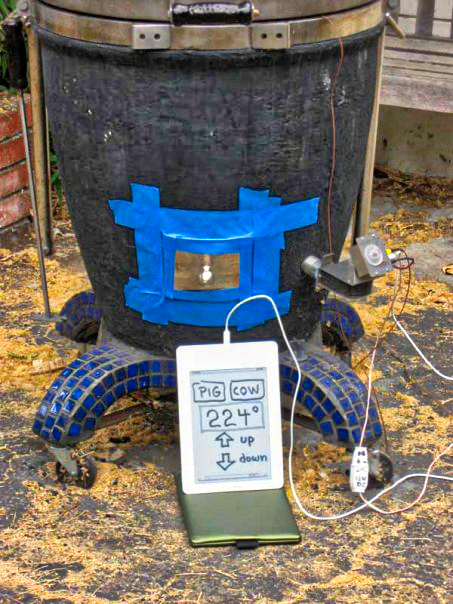
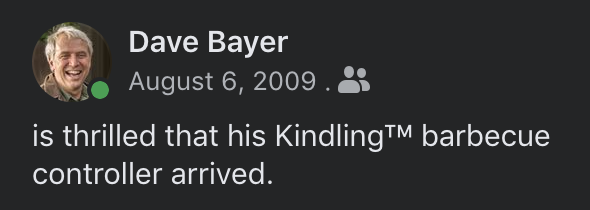
Facebook reminds me that twelve years ago I still had an off-brand cooker, repaired as best I could.
-
 1
1
-
 6
6
-
-
On 10/28/2019 at 1:29 PM, DennisLinkletter said:
That being said I have not use the heat deflector in one of my grills for probably 10 years. Your results will be better using foil to create an indirect area.
I'm on my second decade with a 23" KK. I often use the 23" ULTIMATE DOUBLE BOTTOM DRIP PAN as a heat deflector.
My primary motivation for using a heat deflector is that a ceramic cooker heats from the bottom, and I often want my food exposed uniformly to heat. This happens naturally for low & slow cooks, where the generous insulation of the KK encourages a uniform equilibrium. For hotter cooks, the "heat from the bottom" effect is pronounced in every ceramic cooker, and the KK's build quality can only partially mitigate this.
With a perfect understanding of one's fire and perfect control of one's schedule, one can cook at high heats on a KK after the fire has died down, cooking on uniform radiant heat that the KK does a better job of preserving. At this stage, it's much harder to taste the choice of charcoal.
It's much easier to use good charcoal and a heat deflector, and to cook as convenient after the cooker temperature stabilizes.
I make pizza and Focaccia di Recco on my KK. My neighbor makes pizza in his wood-fired pizza oven. We both screw up sometimes, but his wood-fired fire control is another level of complexity. Of course one can learn, but an honest appraisal beyond bravado would warn others that it takes attention and practice. At its best the wood-fired pizza looks more authentic than any picture I've seen here in decades. No surprise, that's what they do in Napoli. Anyone who thinks they can simulate a restaurant Salamander with their $5,000 home oven's broiler is delusional. One should still learn how to make the best of one's home broiler, or ceramic cooker.
We can reliably make pizza we're very happy with, in our KK. The crux issue is getting the KK hot enough without burning the damn crust. There's an easy fix for when this goes wrong: Move the pizza onto a round pizza screen, so it can finish without direct contact with the pizza stone.
Some people may have figured out pizza without a heat deflector. Can they explain what they're doing right? Remember that we regularly see posts from people who still struggle to just get their KK to pizza temperature, even as others can't imagine having this issue. Having a gift is useless unless one can understand it and explain it to others. I'm eager to put away my heat deflector for pizza, if someone can clearly teach me what to do.
-
 2
2
-
-
On 7/22/2021 at 8:15 AM, tekobo said:
I also have some saltpetre that I keep in deep store and only get out to use and measure on my drug dealer scales when a recipe calls for it.
Ha! We use our drug dealer scale all the time. I'm told it's essential for formulating cola extracts. I use it to weigh yeast and salt for bread, or saffron for tagines.
I loved my trip to Morocco. I was cheated exactly once, in the most surprising setting:
Hamid Fondouk li Houdi
http://www.jaztravelweb.com/MOROCCO/Perfumery_%26_Herbalist.htmlHe was one of the most sophisticated gentlemen to take us into a shop. (After asking for the best spice shop, we were lead there by an official guide recommended by our hotel, but they probably had no idea what was about to transpire, and I am not going to tell them.) Along with other spices, my friend and I each purchased 5 grams of his highest quality saffron. He measured without hesitation by sight, with the authority one would expect from decades of practice. My friend then objected that this looked like less that five grams, so he moved over to an ancient balance scale probably not used since the Indiana Jones movies were filmed, and used an unmarked weight to demonstrate perfect balance. Like I said, decades of practice.
I got home, pulled out my drug dealer scale, and sure enough, measured 1.06 grams (not 5.00). Huh. I can easily afford the loss, and what little I have is great saffron. This was just deeply amusing. One doesn’t expect this from someone who proudly displays his picture taken with Bill Clinton. Or perhaps I am also naive about politics?
I fantasize about bringing a hidden camera, and getting him to cheat me again. He was too practiced for this to be a one-off. But one can actually be arrested for bringing such a scale into Morocco. They take the "drug dealer scale" bit seriously. What I should do instead is bring one and five gram weights, ready to use with his scale. He'll know at this point I'm a repeat customer.
-
 5
5
-
-
39 minutes ago, 5698k said:
Are you free hand sharpening? If so, it could be nothing more than the way you happen to hold the cleaver compared to others.
Yes. On one hand, people overthink the angle thing, what matters is how often we sharpen, not how perfectly we sharpened last year.
I go entirely by feel. It's very easy to feel when one has slipped back to the point where the edge isn't making proper contact, or when one has slipped forward to the point where digging into the stone is an immediate risk. The sweet spot is somewhere right in the middle between these extremes.
I work in a quiet room (other than the dribble of the faucet). I use an Atoma diamond stone to smooth the surface of my Shapton Glass stones frequently, often between knives. Perhaps I secretly want to actually wear out a water stone in this lifetime. More likely, when the stone is very smooth it gives very good tactile feedback as to how the knife is riding. A just-polished stone is like waterskiing a glassy Adirondack lake at dawn.
There is the potential for a feedback loop, here, taking my knives off course: The feel each time I sharpen has everything to do with how I sharpened last time. My chef's knives may have drifted, while for some reason my cleaver sharpening is spot-on.
Further evidence for this theory is that I'd already noticed I can get the 8" Fujitake chef's knife sharper than the 10" Fujitake chef's knife. In both kitchens. I'd always assumed it was something different about the knives, but this could be a reproducible experiment coming down to how I hold each knife as I sharpen.
A variant on your theory: While the VG 10 core is the same, the cladding varies on the different knives, and how straight each edge is. Both of these would affect the feel while sharpening. I go for "what feels best" while sharpening (an apprentice Japanese woodworker asks how to cook the rice for rice glue? So it tastes good), but this may serve me better on some knives that others.
There have been many reasons I've craved a good microscope. This would be one. A really sharp knife is actually more serrated than a dull knife. Whatever we imagine, we're all really just using bread knives.
-
 1
1
-
 1
1
-
-
21 minutes ago, 5698k said:
I didn’t realize VG 10 was so hard..I guess that’s why knife makers use it!
This is a puzzle for me.
In each of two kitchens (my wife's home in California and my work apartment in New York) I have a set of three Fujitake chef knives and a Tojiro DP 3-Layer Chinese Cleaver. Since adopting the cleaver I rarely use the other knives. One can learn to do everything with a cleaver.
I sharpen my knives with an assortment of Shapton Glass stones. A deep dive reveals that one can buy Shapton Glass stones tuned for original, softer Japanese knives, or these stones for more modern formulations such as VG 10. I had noticed on previous stones that it was nearly impossible to sharpen western knives, while the Shapton Glass stones handle western knives easily. This is that hardness issue, again. Somehow I'd made it years without worrying about it, but I'm better off knowing.
So here's the puzzle: Nominally all of my knives are VG 10, yet it seems that I manage to get my cleaver sharper than the other knives.
-
Easy Popcorn Shrimp | Recipe | Almazan Kitchen
Now that's a knife.
My cleaver hasn't left my hand, despite owning many knives. "Unlike many of you" ?? I resemble that remark!
-
 2
2
-
-
The Musui Kamado (Laurie calls it the "indoor K") is perfect for making ghee. Throw in the butter, set on extra low, leave unattended half an hour or more.
The new jar is Marcus Samuelsson's Ethiopian spiced butter, a version made by his wife Maya’s tribe, the Gurage. Ghee with aliums and spices. Incredible aroma. I'm reminded of a fish cookbook from decades ago (I've been unable to identify since) where a Portuguese chef is baffled he has to instruct his staff to put the paprika in fat not water, the best parts of spices are fat soluble.
Tonight's recipe also calls for a bit of Madras curry powder. We don't buy curry powder, like Indians we make a custom blend per recipe. I'm looking up what this is. Samuelsson's single best recipe could be his Berbere Spice Blend featured for example in his Black-Eyed Peas with Coconut Milk and Berbere; it's better than bought berbere from upscale sources. So of course we want to make Madras curry powder from scratch. It calls for curry leaves I happen to have just bought...
Huh. Curry leaves have an amazing flavor, usually unlocked by tempering in oil, somewhat lost if dried for a spice blend. Huh. The Marcus ghee comes back to me. I should make a Madras curry powder ghee, with generous curry leaves. Huh. I should make a custom ghee for rogan josh, and use sous vide to cook a lamb shank confit.
I identify with Samuelsson's trajectory and existential culinary questions. I've been listening to his Yes, Chef: A Memoir that he narrates. I love international food from everywhere, but French technique reaches greater heights than just checking off spice boxes. And whatever I do, my Indian tastes muddy, but my best French gets boring. Samuelsson left his Swedish restaurant to open Red Rooster Harlem, where he applies all of his classic training to world and soul food. I'm reminded of Alex Stupak's Tacos: Recipes and Provocations: A Cookbook where he applies his classic training to tacos.
-
 1
1
-
 1
1
-
-
1 hour ago, C6Bill said:
Franklin does a Masterclass, I bought it.
I actually bought a year, during a promotion that lets me gift a year. I haven't made my way to Franklin yet, as I've studied his book, but the other cooking videos are worth the membership. It's fun watching Thomas Keller relax over time. As a fellow teacher, I get distracted analyzing each person's presentation.
-
 1
1
-
-
I can't give 32" specific advice as I have a 23", but I don't use a basket splitter, and I'm careful to use "too much" lump charcoal, larger chunks loosely spaced to maximize airflow. My hoard of KK coffee lump is precious; I'll use a Fogo charcoal for pizza.
My problem is usually overshooting, not undershooting. Till you figure this out, be generous and loose with your lump. You're an apprentice arsonist, hoping to work on the line someday. Aaron Franklin thinks in "smoke", his cooker designs are all based on his intuitions for airflow. I have no idea what he's talking about, but you clearly need to work your way down from "sufficient" airflow. The KK won't melt if you watch it.
-
 1
1
-



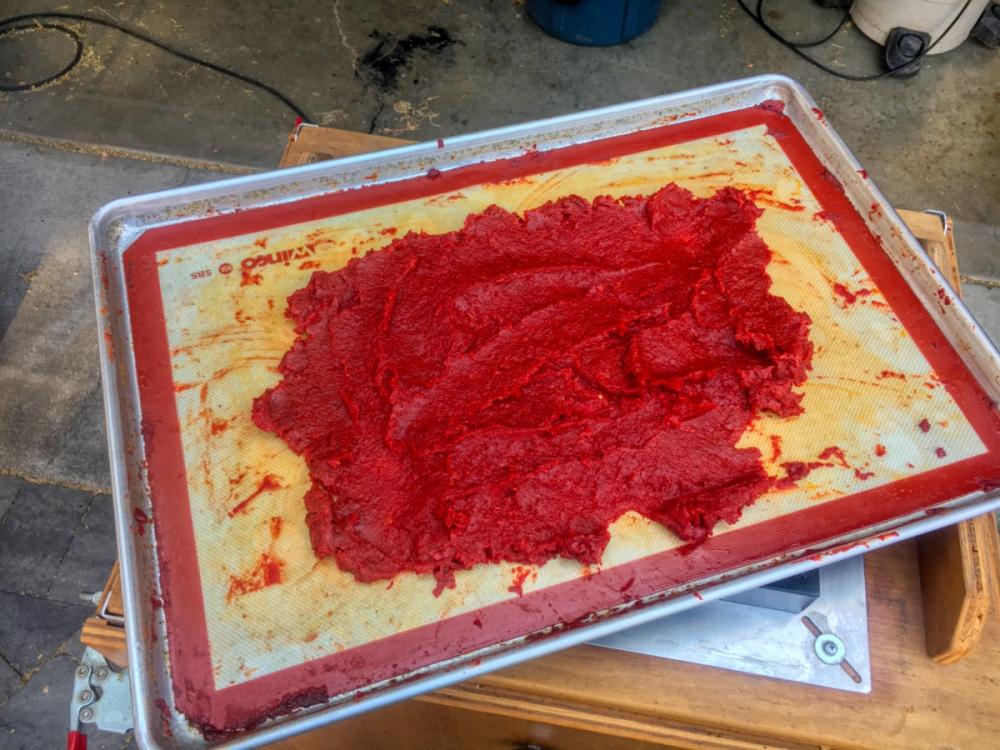
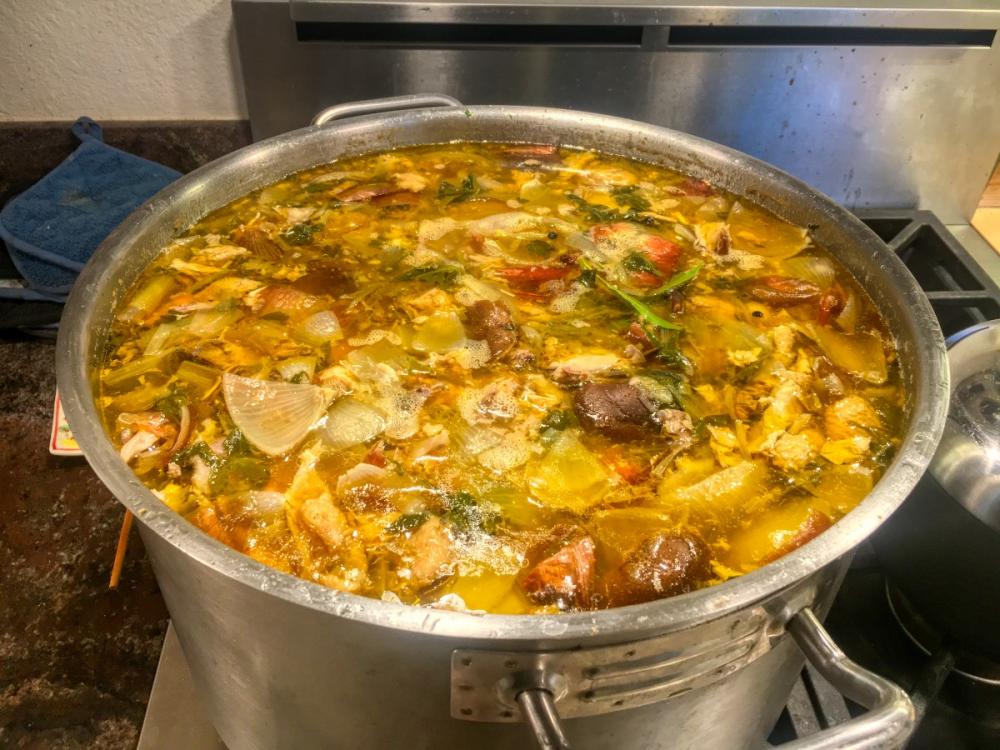
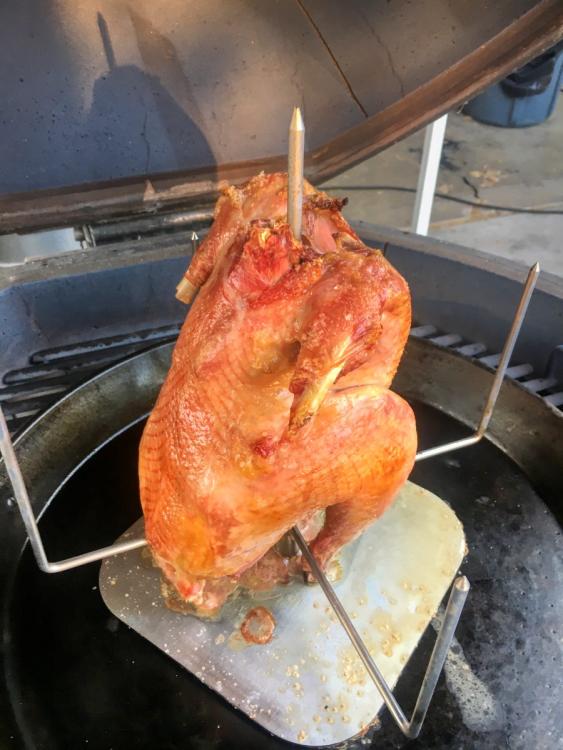
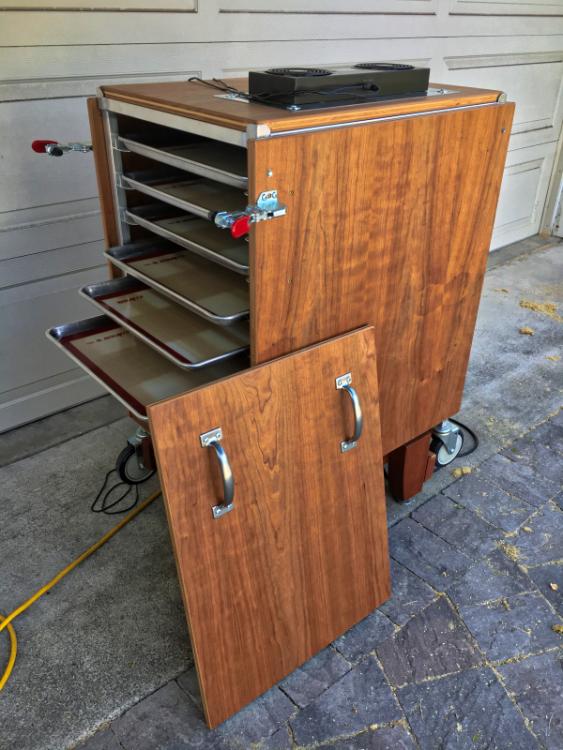
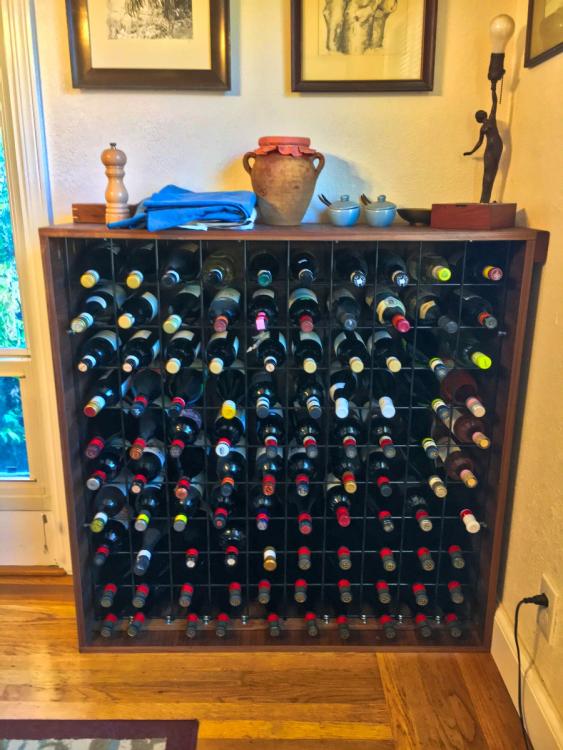
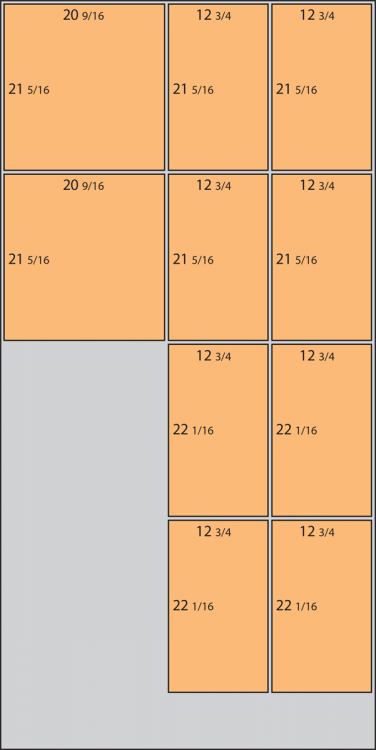
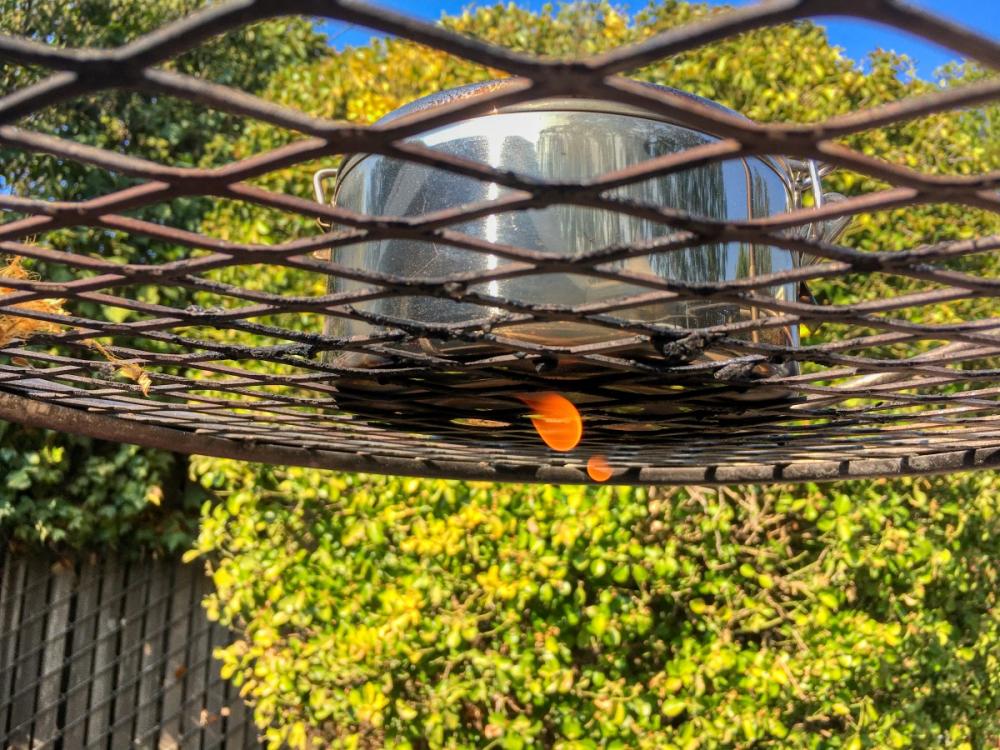

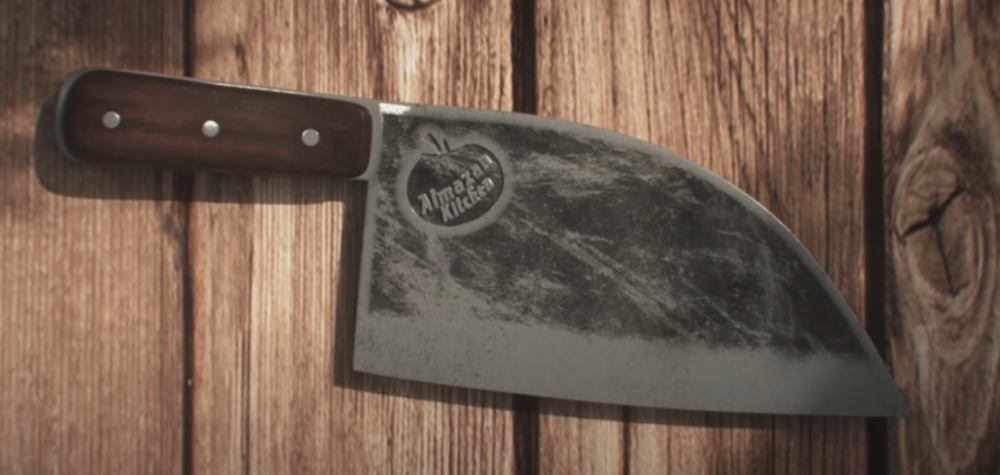

Cold smoke milk?
in Techniques
Posted
As a Giants fan, ask me how I know!